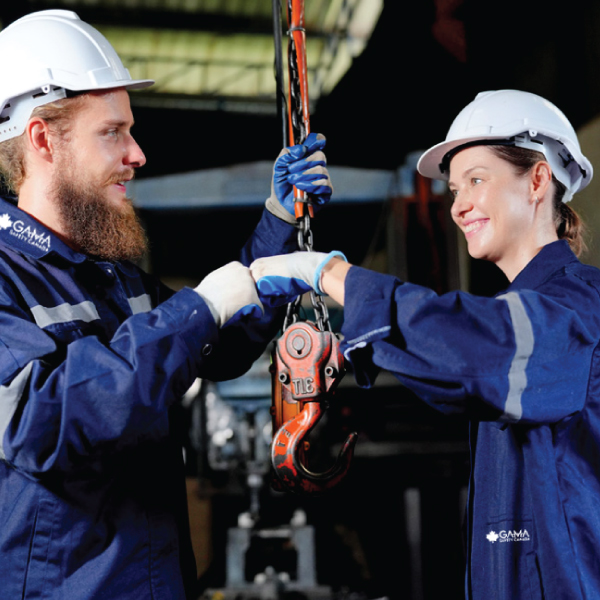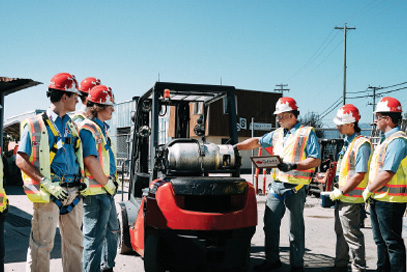Safe and Effective
Rigging Techniques for Lifting Heavy Loads.
Rigging involves the use of ropes, chains, slings, and other equipment to move or lift heavy loads. Proper training in rigging techniques is crucial to ensure that loads are secured correctly, minimizing the risk of accidents, equipment failure, and injury to workers during the lifting process.
Safe and Effective
Rigging Techniques for Lifting Heavy Loads.
Rigging involves the use of ropes, chains, slings, and other equipment to move or lift heavy loads. Proper training in rigging techniques is crucial to ensure that loads are secured correctly, minimizing the risk of accidents, equipment failure, and injury to workers during the lifting process.
OUR PARTNERS AROUND THE WORLD
OUR PARTNERS AROUND THE WORLD
OUR PARTNERS AROUND THE WORLD
OUR PARTNERS AROUND THE WORLD
OUR PARTNERS AROUND THE WORLD
OUR PARTNERS AROUND THE WORLD
OUR PARTNERS AROUND THE WORLD
OUR PARTNERS AROUND THE WORLD
OUR PARTNERS AROUND THE WORLD
OUR PARTNERS AROUND THE WORLD
OUR PARTNERS AROUND THE WORLD
OUR PARTNERS AROUND THE WORLD
OUR PARTNERS AROUND THE WORLD
OUR PARTNERS AROUND THE WORLD
Rigging
Basics & Tools
Learn the fundamentals of rigging, including slings, shackles, and hardware used for lifting and securing loads.
Safe
Lifting Methods
Understand how to inspect rigging gear, calculate load limits, and apply proper lifting techniques on the jobsite.
Rigging Safety Resources
Guidance on selecting appropriate slings for safe rigging operations.
Safe practices for attaching slings and rigging hardware to loads.
Instructions on using standardized hand signals during rigging operations.
WorkSafeBC regulations covering rigging equipment, inspections, and operational safety.
Alert highlighting common lifting point failures and how to prevent them in rigging.
Bulletin detailing strategies to prevent rigging failures in crane operations.
Rigging Safety Overview:
Best Practices for Lifting and Hoisting Operations
Rigging safety is essential to protecting workers, equipment, and materials in any environment where heavy lifting and hoisting take place. Whether using cranes, hoists, or pulley systems, every lift carries inherent risks that must be managed through careful planning, proper equipment selection, and trained personnel.

RIGGING
Rigging Essentials:
Safe Handling and Secure Load Management
Rigging plays a fundamental role in construction, industrial, and maintenance operations, where lifting and moving heavy loads is a daily necessity. Ensuring the proper selection, inspection, and use of rigging equipment is not just about efficiency it’s a legal and moral obligation to protect workers, equipment, and the worksite. This training is designed to build a strong foundation in rigging safety by teaching the core principles of load handling, lifting techniques, and equipment use in alignment with Canadian safety legislation.
Participants will learn to identify the key components of rigging systems, including slings, hooks, shackles, and hoists, and understand how each element contributes to safe load management. Emphasis is placed on recognizing equipment limitations, assessing working load limits (WLL), and applying load control strategies based on the type of rig, weight, shape, and center of gravity of the load. Real-world case studies, diagrams, and checklists are incorporated to reinforce situational awareness and decision-making skills.
RIGGING Definition
Rigging refers to the process of preparing, lifting, and moving heavy loads using specialized equipment such as slings, hoists, pulleys, chains, and cranes. It is a critical task in various sectors including construction, shipbuilding, oil and gas, and manufacturing, where materials or equipment that are too large or heavy to be handled manually must be relocated. Rigging involves not only the physical movement of items but also the precise planning and engineering needed to ensure the process is conducted safely and effectively.
A rigger is a skilled worker trained to assess the load, choose appropriate rigging equipment, secure the load correctly, and oversee or assist in its lifting and placement. Rigging requires a deep understanding of physics, load distribution, balance, center of gravity, and mechanical advantage. Mistakes in rigging can lead to equipment damage, severe injury, or fatalities, making this task one of the most safety-critical activities on a job site.
Rigging systems rely on a variety of components that work in tandem to ensure loads can be lifted and moved securely. Some of the most commonly used elements include slings (made from wire rope, synthetic webbing, or chain), shackles, turnbuckles, eyebolts, hoists, and hooks. Each of these parts plays a distinct role. For instance, slings connect the load to lifting machinery, shackles connect components together, and hooks allow for attachment to the crane or hoist. Other devices such as spreader bars, lifting beams, and tag lines may also be used depending on the complexity of the lift.
These components must be carefully selected based on the type of load, its weight, shape, and the environment in which the lift is taking place. For example, chain slings are often used in high-temperature environments, while synthetic slings are preferred when working with delicate materials. Rigging hardware must meet stringent safety standards, be inspected before each use, and be maintained regularly. Understanding the characteristics and limitations of each component is essential for successful rigging operations.
A qualified rigger is responsible for overseeing the preparation and execution of lifting operations in a way that ensures the safety of all personnel and the protection of materials and equipment. This includes inspecting all rigging gear for defects, planning the rigging strategy, identifying hazards in the lifting environment, and ensuring that equipment is rated appropriately for the load being lifted. The rigger must also understand how to interpret load charts, calculate load weights, and adjust lifting angles to maintain balance and control.
In addition to technical skills, a qualified rigger must be adept at communication. Coordinating with crane operators, spotters, and supervisors is crucial for safe and synchronized lifting. Standardized hand signals and radio communication are commonly used during lifts, especially in noisy or visually obstructed environments. The rigger must be able to think critically and act quickly if conditions change or a problem arises. This role requires not only hands-on experience but also formal training and ongoing education to stay compliant with industry best practices and regulatory standards.
Load calculation is one of the most important aspects of rigging because it directly affects safety and equipment integrity. Knowing the weight of a load determines what type of rigging equipment can be used, how many lifting points are needed, and how the load should be oriented during the lift. Overloading equipment or misjudging the weight can lead to catastrophic failures, such as snapped slings, overloaded cranes, or dropped materials. It’s not just about the total weight the shape, density, and distribution of mass must also be considered.
In many cases, riggers must perform detailed calculations or consult manufacturer specifications to determine the exact load weight and the required gear ratings. Dynamic loads (those that move or shift during lifting) and environmental factors (such as wind or unstable ground) must also be considered. Incorrect calculations or neglecting to calculate altogether can put the entire worksite at risk. Therefore, a critical part of a rigger’s job is using load charts, formulas, and judgment to ensure that the lifting operation is safe and well-executed.
The center of gravity (CG) is the exact point in an object where all of its weight is evenly distributed and balanced in every direction. In rigging, locating the CG is essential to achieving a stable and safe lift. If a load is lifted from a point that does not align with its CG, the object can tilt, spin, or even fall, resulting in serious damage or injury. The goal of any rigging setup is to keep the load level during lifting, which can only happen if the CG is directly beneath the lifting hook or lifting point.
To determine the CG, riggers often analyze the shape, mass distribution, and orientation of the object. In simple symmetrical loads, the CG is usually at the center. However, irregular shapes or uneven materials can shift the CG, requiring adjustments to sling length or attachment points. In more complex operations, calculating the CG may involve engineering input or trial lifts. Regardless of the method, understanding and accounting for the CG is non-negotiable in professional rigging practice.
Proper rigging plays a vital role in maintaining safety on construction and industrial job sites. Poor rigging practices can result in dropped loads, crushing injuries, damage to property, and delays in the project timeline. By contrast, proper rigging ensures that loads are moved efficiently, securely, and without incident. It protects not only workers directly involved in the lifting process but also those working in surrounding areas. When loads are correctly secured, inspected, and guided, the risk of unpredictable movement is minimized.
Furthermore, proper rigging reflects a workplace culture that prioritizes risk management, compliance, and continuous training. Workers who are trained in rigging best practices are more confident, make better decisions, and contribute to a safer work environment overall. Supervisors and employers benefit from fewer incidents, lower insurance claims, and improved operational efficiency. Ultimately, proper rigging is not just a technical task it’s a fundamental aspect of responsible and professional worksite safety.
RIGGING Legislation
Rigging operations in Canada are primarily regulated under provincial Occupational Health and Safety (OHS) legislation and the Canadian Centre for Occupational Health and Safety (CCOHS) guidelines. While the exact rules vary by province or territory, they all require employers to ensure that lifting and rigging activities are carried out in a safe and competent manner. In British Columbia, for example, WorkSafeBC’s OHS Regulation Part 14 (Cranes and Hoists) outlines specific responsibilities for rigging practices.
The regulations often address equipment certification, load limits, rigging inspections, and competency of personnel. For federally regulated industries (like shipping, rail, and telecommunications), the Canada Labour Code Part II applies. Across all jurisdictions, a key legal requirement is that only qualified and competent riggers are permitted to perform rigging tasks. This ensures workers have the training and experience necessary to prevent accidents and meet legal obligations.
According to Canadian OHS laws, the employer holds primary legal responsibility for ensuring a safe work environment, including the safety of rigging operations. This includes providing adequate training, enforcing the use of proper equipment, conducting regular inspections, and developing safe work procedures. Supervisors also carry legal responsibility for monitoring compliance and intervening when unsafe practices are observed.
In addition, workers have a legal duty to follow safety procedures and use the equipment provided as intended. If a rigger knowingly operates defective equipment or bypasses safety steps, they may also be held accountable under OHS laws. Ultimately, rigging safety is a shared responsibility — but from a legal standpoint, employers are expected to take the lead in ensuring compliance and preventing workplace injuries.
Yes, in many Canadian provinces, certification or formal training is a legal requirement for anyone performing rigging tasks. While the exact certification process may differ depending on the region and the nature of the work, provincial regulations usually state that only “competent persons” may perform rigging activities. Competency is often defined as someone who is qualified through knowledge, training, and experience to safely perform a specific task.
For example, in British Columbia, rigging activities conducted in conjunction with crane operations must follow WorkSafeBC’s Regulation 14.34, which states that only qualified workers may perform rigging duties. Similarly, Alberta’s OHS Code and Ontario’s OHS Act require proof of competency and documentation of training. Many employers also adopt training programs aligned with CSA Standard Z150 for crane safety, which includes detailed rigging provisions.
Under OHS regulations in all provinces, rigging equipment must be inspected regularly to ensure it is safe and fit for use. This includes pre-use inspections by workers and regular documented inspections by a qualified person. Items such as slings, shackles, hooks, chains, and hoists must be checked for wear, damage, corrosion, deformation, or missing labels. Any equipment that does not meet safety standards must be removed from service immediately.
In British Columbia, for example, WorkSafeBC Regulation 14.14 requires that all lifting equipment be maintained in accordance with the manufacturer’s instructions and thoroughly inspected by a qualified individual. These inspections must be documented, and records must be retained on-site and available upon request by inspectors. Failing to comply with inspection protocols may result in fines, work stoppages, or serious liability in the event of an accident.
Non-compliance with rigging legislation in Canada can result in significant legal, financial, and operational consequences. Regulatory bodies such as WorkSafeBC, Alberta OHS, or the Ontario Ministry of Labour may issue stop-work orders, administrative penalties, or citations for violations of safety standards. In serious cases especially when non-compliance leads to an injury or fatality criminal charges may be laid under Bill C-45, which amended the Criminal Code to hold organizations and individuals criminally accountable for negligence.
Financial penalties vary depending on the jurisdiction and severity of the infraction. For example, WorkSafeBC may issue administrative penalties that exceed $100,000 in high-risk cases. Additionally, non-compliant companies may face increased insurance premiums, loss of contracts, or reputational damage. To avoid penalties, it is essential for employers to maintain up-to-date safety programs, provide proper training, and ensure regular equipment inspections are carried out as required by law.
Canadian OHS regulations define a “competent person” as someone who is qualified because of their knowledge, training, and experience to perform a specific task safely. In the context of rigging, this means the individual must understand load dynamics, equipment limitations, rigging techniques, and relevant safety laws. They must also be able to recognize hazards and take corrective action to prevent accidents.
This legal definition appears in various provincial safety regulations. For example, Ontario’s Occupational Health and Safety Act clearly outlines that a competent person must also be familiar with the Act and regulations applicable to the work. The designation of competency may require formal training or certification, but ultimately, it is the employer’s responsibility to verify that the worker meets all criteria. Allowing an unqualified individual to perform rigging duties is a violation of the law and may expose the employer to liability.
Other Courses You May Be Interested In.
Workers who complete RIGGING training often continue their safety education with the following programs:"
More Courses
Online Courses
"Explore & Book Online Courses!
Have a Question?
"We’re here to help! Click the button to get in touch."


